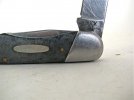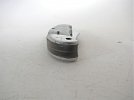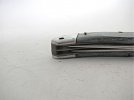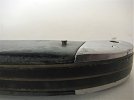To everyone who answered my question - thanks!
I will give the Mothers or the Flitz a try, I have some of each out in the shed.
I don't have any pictures of me cleaning birds (I am going bird hunting again next week - I'll get some taken then). In the meantime, here is an article I found and saved in 2010 that has a nicely written description (but no pictures) - it will have to do until I get some photo's.
Thanks again, OH
Instructions by Dave P. Fisher;
1. Turn the bird on its back. Locate the soft area on the bird's underside between the tail and the lower point of the breastbone.
2. Pluck the feathers from the soft area, exposing the thin layer of skin covering the intestines.
3. Pull up the knife blade and cut a vertical incision from the breastbone to the tail. Do not plunge the knife in; slit the membrane with the knife tip. Cut a second incision horizontally and midway across the vertical cut. Fold the blade back into the handle.
4. Pull up the hook. Stick the hook into the body cavity, pull out the entrails and put them off to the side. (Push the hook into the body cavity and twist the hook around to catch and drag out everything in the cavity. This cleans faster than a straight pull.) Work the hook in and out of the body cavity all the way to the neck until all the entrails are cleaned out.
5. Wipe off the hook and fold it back into the handle.
Read more: How to Use a Bird Hook Knife | eHow.com
http://www.ehow.com/how_5847913_use-bird-hook-knife.html#ixzz0y5cgSoqe





